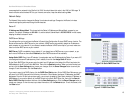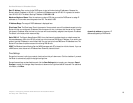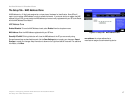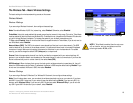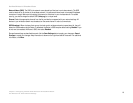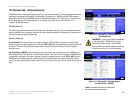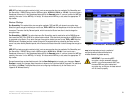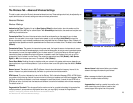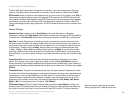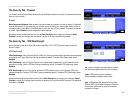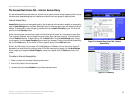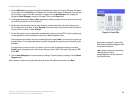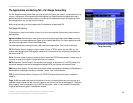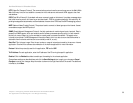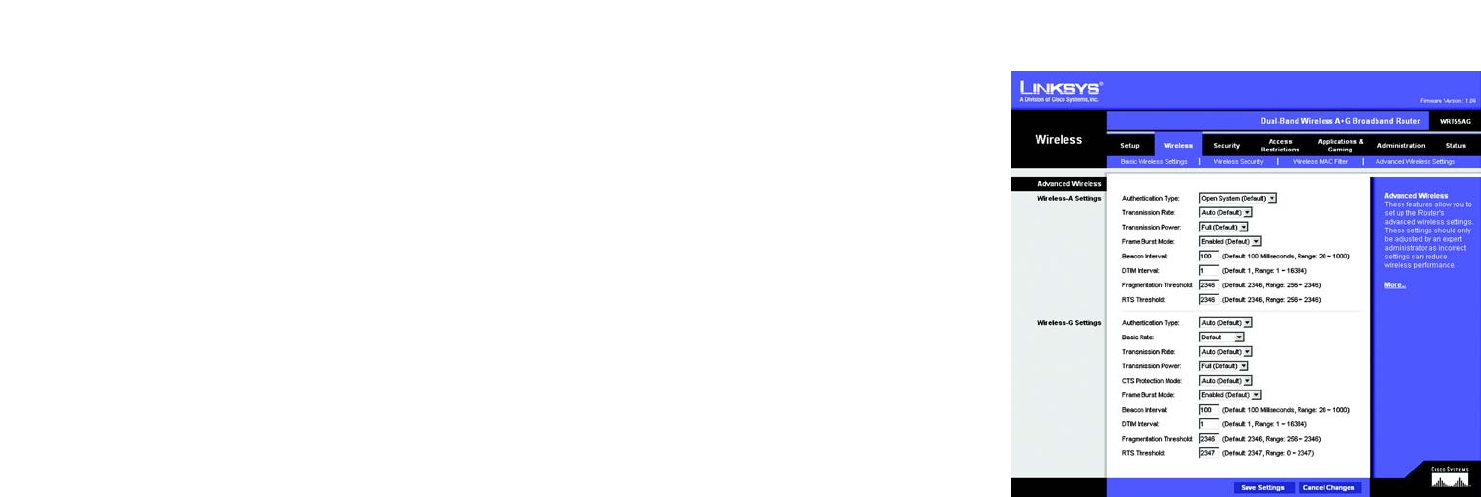
23
Chapter 5: Configuring the Dual-Band Wireless A+G Broadband Router
The Wireless Tab - Advanced Wireless Settings
Dual-Band Wireless A+G Broadband Router
The Wireless Tab - Advanced Wireless Settings
This tab is used to set up the Router’s advanced wireless functions. These settings should only be adjusted by an
expert administrator as incorrect settings can reduce wireless performance.
Advanced Wireless
Wireless-A Settings
Authentication Type. The default is set to Open System (Default) authentication, when the sender and the
recipient do NOT use a WEP key for authentication. With Shared Key authentication, the sender and recipient use
a WEP key for authentication.
Transmission Rate. The rate of data transmission should be set depending on the speed of your wireless
network. You can select from a range of transmission speeds, or you can select Auto (Default) to have the
Router automatically use the fastest possible data rate and enable the Auto-Fallback feature. Auto-Fallback will
negotiate the best possible connection speed between the Router and a wireless client. The default value is Auto
(Default).
Transmission Power. The greater the transmission power used, the larger the area a wireless network covers.
To minimize the likelihood of eavesdropping by unauthorized wireless users, do not use more transmission power
than necessary to cover the range needed by your wireless network. Try using the Router at different levels of
transmission power, and determine how much power is needed to reach the wireless client, such as a PC or
access point, that is farthest from the Router. Then select the appropriate level, Full (Default), Half, Quarter,
Eighth, or Min, from the drop-down menu. The default is Full (Default).
Frame Burst Mode. Enabling this option should provide your network with greater performance, depending on
the manufacturer of your wireless products. If you are not sure how to use this option, keep the default, Enabled
(Default).
Beacon Interval. The default value is 100. The Beacon Interval value indicates the frequency interval of the
beacon. A beacon is a packet broadcast by the Router to synchronize the wireless network.
DTIM Interval. This value indicates the interval of the Delivery Traffic Indication Message (DTIM). A DTIM field is
a countdown field informing clients of the next window for listening to broadcast and multicast messages. When
the Router has buffered broadcast or multicast messages for associated clients, it sends the next DTIM with a
DTIM Interval value. Its clients hear the beacons and awaken to receive the broadcast and multicast messages.
The default value is 1.
Fragmentation Threshold. This value specifies the maximum size for a packet before data is fragmented into
multiple packets. If you experience a high packet error rate, you may slightly increase the Fragmentation
Figure 5-15: Wireless Tab - Advanced Wireless Settings
beacon interval: data transmitted on your wireless
network that keeps the network synchronized.
dtim: a message included in data packets
that can increase wireless efficiency.
fragmentation: breaking a packet into smaller units
when transmitting over a network medium that
cannot support the original size of the packet.



